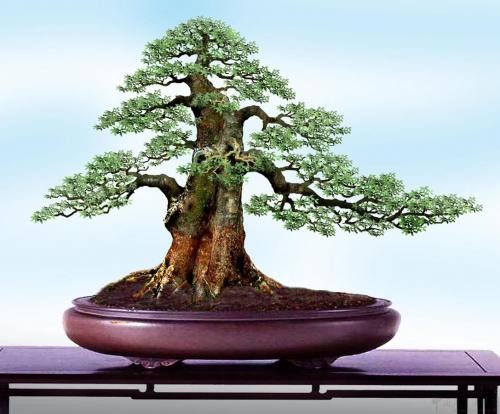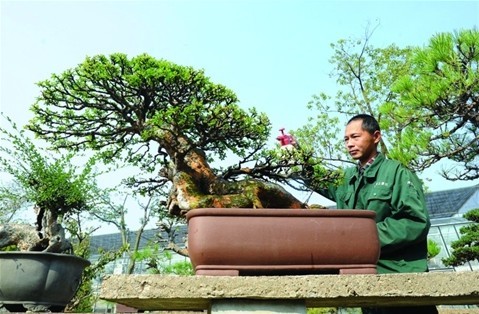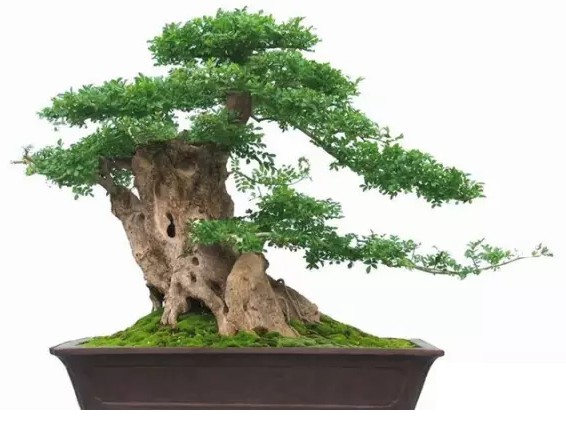Basic Characteristics and Main Values of Su Style Bonsai
The production of bonsai in Suzhou has gone through hundreds of years of vicissitudes since the Ming Dynasty. The styling technology of Su-style bonsai is characterized by the high combination of art and science. It contains the theoretical basis of literature and fine arts, takes the painting theory of "Wumen painting School" as the theoretical basis for creation, especially under the artistic influence of Wu culture, carries out modeling according to the growth habits of plants as the scientific basis, carries out different creations according to different plants, and strives for the creative technique of "coming from nature but higher than nature" according to different stump archetypes. A variety of bonsai works have been created by using the unique technical method of "coarse binding and fine shearing, mainly shearing and auxiliary pruning".

Su-style bonsai modeling skills are also long-lasting. It usually takes several years to complete a bonsai work, and through scientific conservation and management, its art cycle can be as long as several decades or even hundreds of years, so it is also a cultural relic with vitality, which can be called a "living cultural relic".
Suzhou bonsai takes trees as the main creative material, through artistic processing and careful training, created in the pot from the natural image beauty and higher than the natural artistic conception beauty, with its distinctive national characteristics, elegant and elegant artistic style swept the world. Its main values are:
1. Practical value
Suzhou is a garden city, large and small gardens are the epitome of nature, and bonsai works derived from nature and higher than nature can better reflect the art of gardening, so if bonsai can enter thousands of families, it brings people the opportunity to get close to nature and appreciate art.
2. Horticultural value
The modeling technology of Su-style bonsai is inseparable from meticulous maintenance and management. the existing bonsai works not only need to use traditional techniques to ensure their growth, but also must be managed by scientific conservation technology. At the same time, the modeling technology of bonsai plays an important guiding role in the modeling of popular landscape trees.
3. Humanistic value
The works created by Su-style bonsai modeling techniques all embody the author's aesthetic taste. Most of the literati in the past dynasties used bonsai creation to express their emotional world, placed their enthusiasm and understanding of the philosophy of life.
4. Artistic value
The bonsai modeling skills of Su School were deeply influenced by "Wumen painting School" and Wu culture, especially in the fifties and sixties, Zhou Skinjuan and Zhu Zi'an combined the creative ideas of literati and horticulturists, and organically unified bonsai creation skills with local painting style, which made Suzhou bonsai unique at home and abroad. His works are like big trees in nature, and they are majestic, rough and bold, and full of charm. Its temperament is like a broad pen written by a master of traditional Chinese painting, with both spirit and form, and spirit is better than likeness.
5. Historical value
Bonsai art itself is the accumulation of history, which reflects the development history of bonsai in various periods, and many of the existing works themselves are historical relics handed down to this day. In the process of creation, Su-style bonsai generally choose ancient piles, ancient pots and ancient shelves, so the Suzhou bonsai work itself is a living cultural relic with high cultural relic value.
Time: 2019-06-04 Click:
- Prev

Pruning Technology of Suzhou Bonsai Modeling Technology
Suzhou bonsai modeling skills have high requirements for pruning. There are two main pruning techniques: dormant pruning and growing pruning. Dormancy period: occurs mainly in winter, begins after defoliation and ends before spring germination
- Next

On Yangpai Bonsai and its characteristics
Yangpai bonsai is one of the excellent traditional arts of the Han nationality and one of the five major schools of bonsai in China. A bonsai art school named after Yangzhou City, Jiangsu Province, which began in the Tang Dynasty. Its one-inch (one-inch 3.3.cm) three-bend production skills can be described as unique in the world. In order to better protect this special set of bonsai production skills
Related
- Fuxing push coffee new agricultural production and marketing class: lack of small-scale processing plants
- Jujube rice field leisure farm deep ploughing Yilan for five years to create a space for organic food and play
- Nongyu Farm-A trial of organic papaya for brave women with advanced technology
- Four points for attention in the prevention and control of diseases and insect pests of edible fungi
- How to add nutrient solution to Edible Fungi
- Is there any good way to control edible fungus mites?
- Open Inoculation Technology of Edible Fungi
- Is there any clever way to use fertilizer for edible fungus in winter?
- What agents are used to kill the pathogens of edible fungi in the mushroom shed?
- Rapid drying of Edible Fungi

